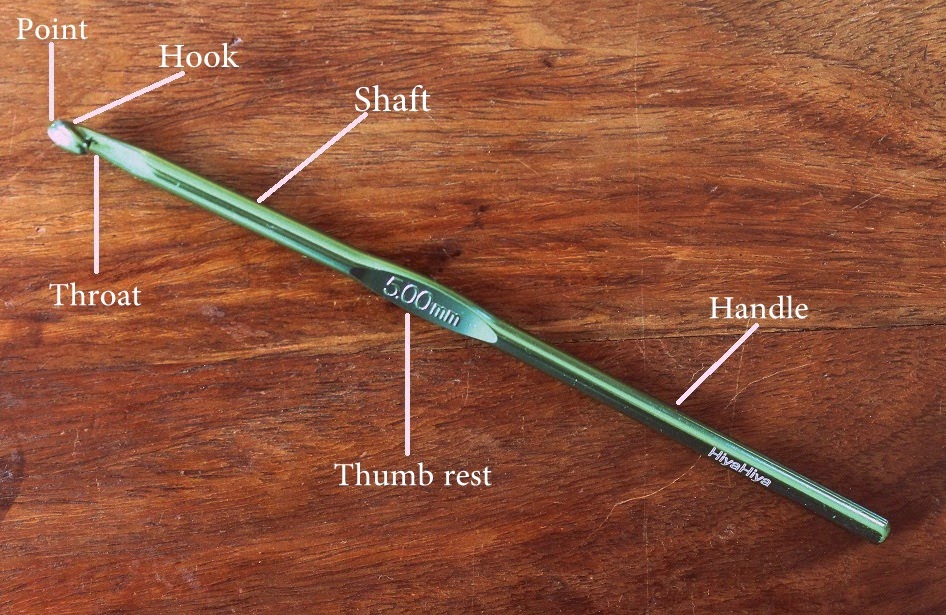As a crochet tutor the question I get asked the most is:
what is the right way to hold the hook? Well, there isn't one, the right way to
hold a hook is the way it's most comfortable for you. However, it's good to consider that the way
you hold your hook depends on lots of factors: your muscle memory, the length of
your fingers and shape of your hands. Before we explore ways of holding the
hook, let’s familiarise ourselves with it first.
Point - This part of the hook is inserted into stitches, allowing
it to easily slide into stitches you are working on. The point can range from
very pointy to rounded.
Hook – used to hook the yarn and draw it through loops of
yarn
Throat - shaped area that helps to slide stitch up onto the
next part of the crochet hook
Shaft - part of the hook that the loop rests on while you
are crocheting. This part of the hook determines the size of your stitches.
Thumb rest - indentation that allows you to rest your thumb
on the hook.
Handle - The handle is the part of the hook that you’ll hold
while crocheting
Let’s look at the two most common ways to hold a hook:
Knife Method – exactly as it sounds, you hold the crochet
hook as you would hold a knife. Your hand will grip over the hook with the
handle resting against the palm of your hand and your thumb, index finger and
middle finger grasping the thumb rest.
Pencil Method - hold the hook as you would hold a pencil, your
thumb and index griping the thumb-rest, middle finger closer to the shaft, and
the handle is resting on the fleshy area above your index finger.
I hold my hook like a knife. This is the way I have been taught
by my mum as a child, when I picked up crochet hook again after years it was
this way I instinctively held it.
The way you hold your hook and yarn is completely your
choice, as long as your stitches look as they should. However, if after a bit
of crocheting your hands, arms or back start hurting then it is time to explore
different ways. Why don't you experiment with the two different ways and see
which one suit you best.
Crochet hooks come in many different types and sizes. They
are usually made out of:
Steel - come in the smallest sizes and are often used in
fine thread.
Aluminium - come in broad range of sizes. Suitable for
most fibres, allowing for smooth and quick crocheting.
Plastic - available in all the common sizes as well as jumbo
hooks. Usually made out of hollow plastic.
Wood or Bamboo - available in all but the smallest and jumbo sizes. Lightweight
and very good on your hands. Do avoid the smallest sizes with blunt points when you are working with thin yarns, as
they do not pass easily through stitches.
I choose a hook depending on which fibre I want to crochet
with. Fine steel hooks are perfect for crocheting fine intricate lace, like
doilies and are perfect for working with fine cotton.
I always found wooden hooks perfect for working with alpaca
yarns, mohair and silk, and aluminium ones
for wool, cottons and most other fibres.
Do apologise for the scratches on my hands, this is how my cats show me they love me :P
Anna x




No comments:
Post a Comment